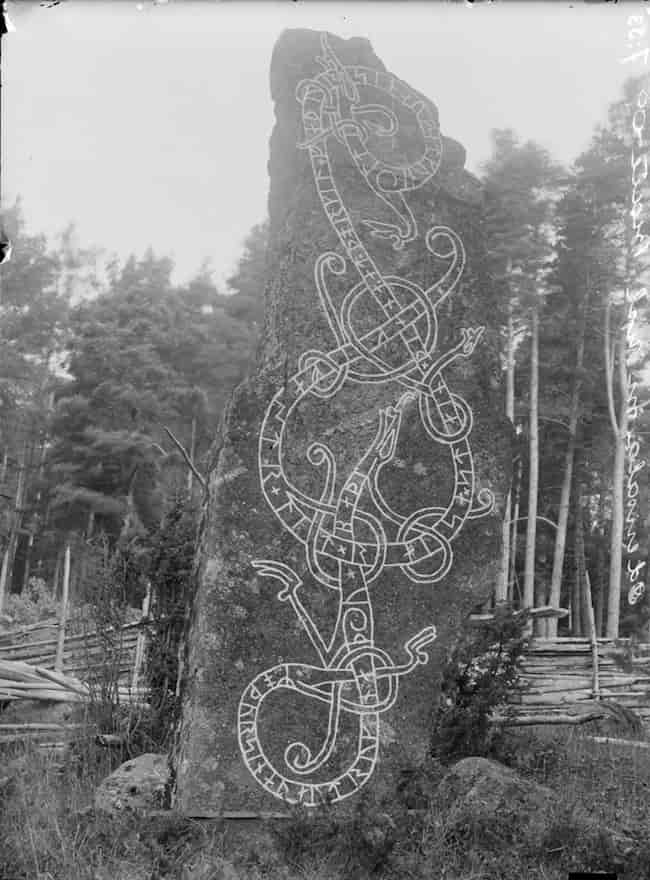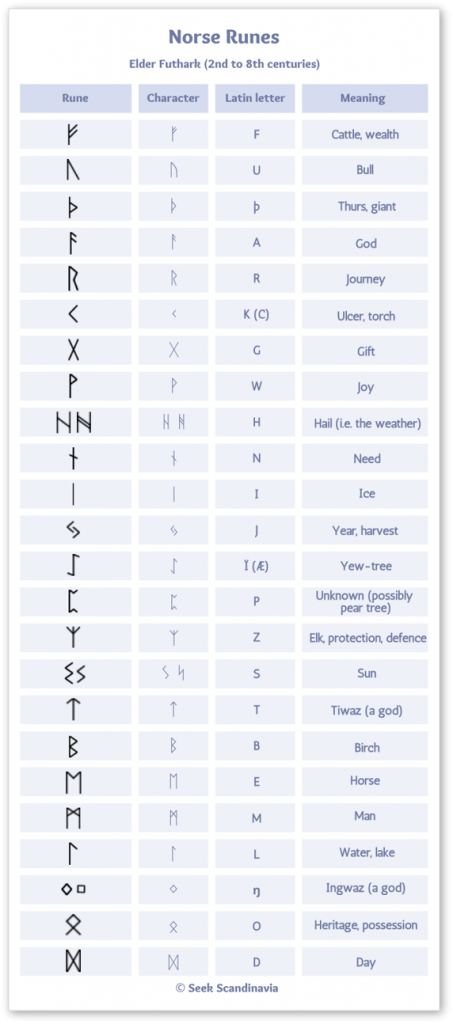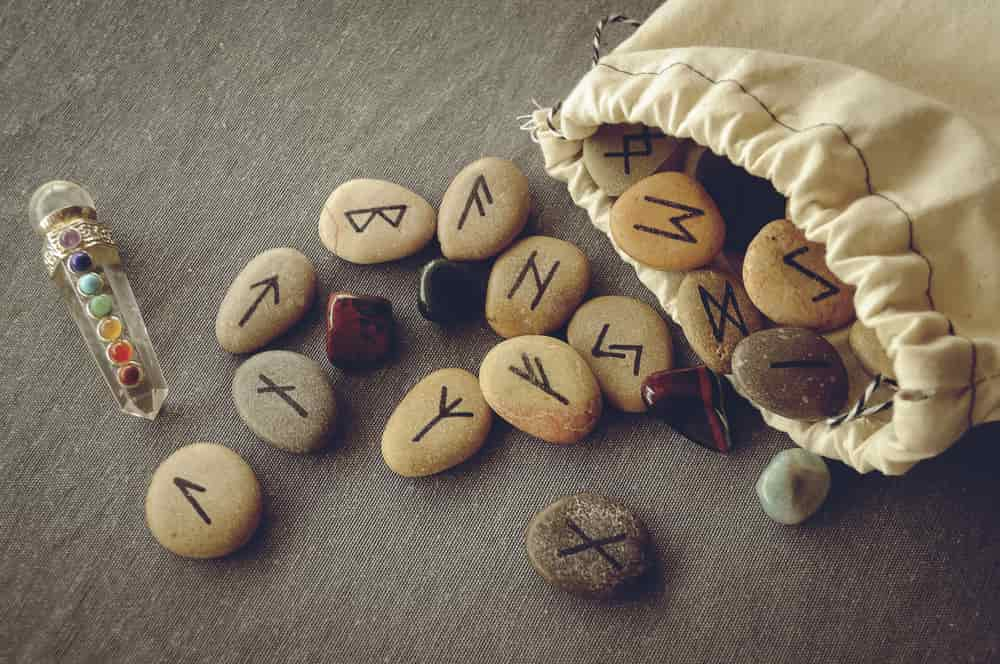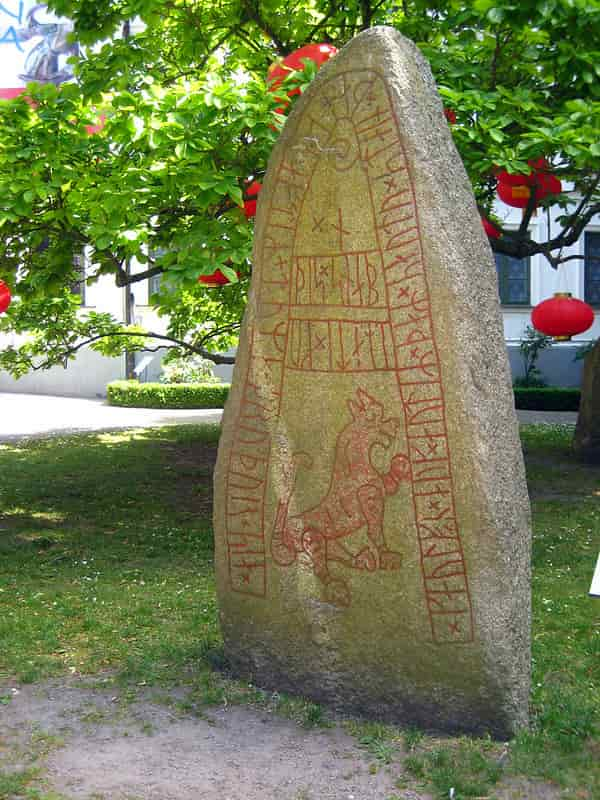Writing systems allow us to convey thoughts across vast amounts of time and distance. The way these letters you’re reading right now can reach anyone with an Internet connection is practically magical, but older writing systems have a strong connection to many magical traditions.
Whether by magic or imagination, the Norse runes of the Viking Age have an enduring power that persists to this day.

Table of Contents
What is a Norse rune?
Norsemen and other Scandinavians used an alphabet system of writing called the Futhark. The Elder Futhark were first used by Germanic tribes around the transition to the Common Era (CE). Each rune served as both a phonetic element and an inherent meaning that played into its ritualistic use and purported magical powers.
Like many of the world’s alphabets, Futhark traces its origins back to Egyptian hieroglyphics. This complex writing system had ornate symbols that could stand as both an associated word and a related phonetic element. The more ornate elements were dropped in the first Proto-Sinaitic alphabet before passing through the Greek and Italian regions to reach Germany.
According to the Hávamál, runes are a gift to the world from the primary god, Odin. In Stanza 141, the hidden runes are said to be full of “might and power”. Odin made a point to give some – not all – of the powerful inscriptions to humans.
Get your Scandinavian-inspired little girl the ultimate book to honor her Nordic name roots: Helga Makes a Name for Herself
A hilarious and empowering picture book about a small but strong Viking girl who is determined to be a warrior and get her name out into the world!

In the same way that written Latin was strongly associated with the Catholic scholars and the nobility, runes were part of the religious fabric of Viking society. They were not exclusively used for rituals, but the strong association carried forward through history to the modern era.
Although their mystical nature seems inherent, even the Hávamál quickly details the utilitarian uses of the runes in communication. Writing, reading, proving, asking, sending, and more are all mentioned in the stanza immediately after Odin gives the runes to mankind. Despite the suggestion, literacy rates were not high in Viking Age Scandinavia.

Vikings did not have paper or papyrus, so the writing mediums available were bone, wood, or stone. Carving into any of them is not nearly as fast as marking paper with a pen, but more mundane runes would be carved into wood or bone. Stone seemed to be reserved for special occasions, such as memorials to famous Vikings and important battles.
You may also be interested in: What Did The Vikings Look Like?
Are Celtic and Norse runes the same?
Celtic and Norse runes are closely related, though the Celts were not the ones who actually used the writing system. More accurately, what people might call Celtic runes were used by the Anglo-Saxons in England. The Celts had some symbols with religious importance, like the triskele and triquetra, but their writing system was distinct from those symbols, unlike runes.
The Angles and the Saxons were both Germanic tribes that crossed the waters of the British Isles. Their language formed into Old English, which would have been easier to understand for Old Norse speakers than it would be for modern English ones.
Get these stunning gold engraved opalite Rune Stones

Because both derived from the Elder Futhark and Germanic languages, the Nordic and Anglo-Saxon runes were nearly identical. The Old English variety had more symbols at the time, though more were added to the Nordic Futhark past the Viking Age.
The Celts and Vikings may have inadvertently influenced one another to a degree, but Celtic cultural aspects like reverence for the yew tree show up more in runic magic particular to the British Isles using the Anglo-Saxon Futhark. This crossing of cultural influences, the passage of time, and media depictions all contribute to the confusion.
What language are Norse runes?
The Nordic runes were the written alphabet of Old Norse, the language of the Vikings. At the time, the Scandinavian region all spoke regional dialects of Old Norse. To this day, the regional distribution of the language can still be seen in the similarities between Norwegian, Swedish, and Danish.
Their written forms are understandable for one another with only a few differences between the words and this is a lasting influence of the Nordic runes. When spoken, the differences become more apparent, especially when listening to a Danish speaker talk to one of the others.
Related: What Language Did the Vikings Speak?
How many Norse runes are there?
The number of runes varied along with the times. Around the time of the Viking Age, the Nordic runes consisted of the younger Futhark’s 16 runes. Despite being newer than the Elder Futhark, the Younger has the least number of runes out of all the variations.
Later Medieval runes used small marks to change the sound of the basic runes, plus the Latin alphabet was used side-by-side with the runes to allow even more symbols.
The Elder Futhark consisted of 24 runes, as you can see below:

What is the most powerful Norse rune?
Details on how Vikings used runic magic are scarce, but they were known to use runes for divination, protective charms, and spells. This means that certain symbols were considered as being more powerful Norse runes than others, simply due to how often they appear in stories that have been found by modern archaeologists in Viking digs.
All will prove true that thou askest of runes –
those that are come from the gods,
which the high Powers wrought, and which Odin painted:
then silence is surely best.
Hávamál, stanza 79
Whether casting runes for divination or inscribing them for spells, the essence of the gods was being put to work.

Because surviving runestones are largely memorial in nature instead of documentary, there is no recording of the exact divination practices or even the proper ways to inscribe a rune, if any such methods exist.
Within the Poetic Edda’s tale of Sigrdrifumol, the odd story tells of Sigurth, son of Sigmund, freeing a valkyrie from her sleep. During their conversation, Sigurth asks her for wisdom, and she replies with some runic advice.
Winning-runes learn, | if thou longest to win,
And the runes on thy sword-hilt write;
Some on the furrow, | and some on the flat,
And twice shalt thou call on Tyr.
Sigrdrifumol, stanza 6
Tyr is both the name of the Norse sword god and one of the runes of the Futhark, so it seems an obvious choice as the strongest rune for a warrior culture. The valkyrie also adds the wisdom of knowing birth runes, wave runes, speech runes, protective runes, and even thought runes. As in other parts of history (and pop culture), the valkyrie symbolizes both protection and power.
Using magic to win a sword fight matters little when your boat wrecks and you make a social blunder at the Thing and upset everyone, so a true rune master would have the wisdom to learn and use the power of all the runes.

How do you write in Old Norse runes?
The Futhark is a fairly simple alphabet, and you can learn to write the entirety of the Younger Futhark with a short bit of studying.
- ᚠ makes an “f” sound, and its meaning is fé or wealth. The two upward slashes are frequently straight instead of curved.
- ᚢ is úr. It makes an “oo” sound, like food or took, but it also makes several other sounds in Younger Futhark.
- ᚦ makes the combined “th” sound. It means Thurs, a reference to a race of powerful beings in Norse mythology.
- ᚨ makes an “ah” or “oh” sound. Its meaning is As, relating to the gods, as in “Asgard”.
- ᚱ is the “r” equivalent in Futhark, and its name is
- ᚴ gives a “k” sound for its meaning, kaun. The meaning can be seen as “sore” or “ulcer”.
- ᚼ looks like a snowflake, which helps make the meaning of hagall (hail) easier to remember.
- ᚾ makes an “n” sound for naudiz. Its meaning, “need”, refers to a dire emergency like hunger.
- ᛁ might be the easiest to learn. It makes an “i” or an “e” sound, and it means isa or ice.
- ᛏ vaguely resembles a hilted sword pointed downward. It represents Tyr, the sword god of the Norse.
- ᛒ is a pointy “B” that can be both a phonetic “b” or “p”. It means björk (birch), not related to the singer.
- ᛘ is best memorized as an upside-down “m” with a handle. It means “man”.
- ᛚ is another upside-down letter for English writers, since it stands in for the “l” sound. Lögr is associated with the sea.
- ᛦ is the final rune, yr. It makes a voiced uvular trill often heard in French. The rune refers to the yew tree.
How do you spell Thor in runes?
Thor is spelled “ᚦᚬᚱ” in the Younger Futhark. You are very likely to see his name spelled using the Elder Futhark runes instead, which would be “ᚦᛟᚱ”. In either case though, but especially the latter, you can likely see how this evolved into the Latin letters used to spell “Thor” in English today.
In fact, the Norse day of the week equivalent to Thursday (Þórsdagr) also took its name from Thor – much like the English one does now.
Are Nordic runes used today?
No languages continue to use Nordic runes or the Futhark as their alphabet in modern times. However, Nordic runes still see other uses due to their cultural connection to mysticism and the Viking Age. This includes both historical remnants and even modern languages in the region.
For current residents of the Scandinavian region, runes are a link to the past that they can see on everyday walks. Runestones litter the countryside in many Nordic countries, and most serve as memorials for lost loved ones and fallen warriors.
Despite being “Nordic” runes, runestones are more commonly found in Sweden than other Scandinavian countries. A few more people there may know Futhark, but the languages have diverged enough that they can’t easily understand the meaning.
Related: 9 Most Famous Swedish Vikings in History
Like most of Viking history, magical practices with runes lay under the shadow of the past for centuries. Runic magic was combined with yew carving in England before transitioning to the rest of Europe and fading into the background.

At the beginning of the 20th century, runic magic saw a resurgence within the Germanic mysticism community. The use of the iconography by Hitler and others has left an unfortunate tarnish on the runes, though the most maligned symbol was the swastika that was stolen from various cultures around the world. These traditions largely dissolved after the fall of Nazi Germany, but the modern Asatru or Heathenry movement picked them back up beginning in the 1970s.
In modern media, runes make frequent appearances as both a magical element and a reference to the Vikings. One popular Swedish death metal band, Amon Amarth, heavily uses Viking iconography. One version of their logo from 2016 includes a ring of runes around the band’s name. In the show Vikings, the arguably insane Floki heals Ragnar by using runic magic carved into antlers.
